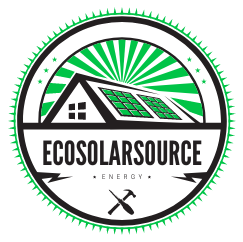How to Invest in Solar Projects
Know the details about How to Invest in Solar Projects, Investing in solar projects offers a sustainable and profitable opportunity to tap into the growing demand for renewable energy. To get started, investors can explore options such as buying shares in solar companies, investing in solar funds, or financing large-scale solar farms.
Conducting thorough research on the industry, assessing the financial health of potential projects, and understanding government incentives or tax breaks are crucial steps. Crowdfunding platforms also allow smaller investors to participate in solar ventures. Long-term benefits include steady returns, environmental impact, and alignment with global green energy goals, making solar a rewarding sector for ethical investment.
Table of Contents
How to Invest in Solar Projects: A Comprehensive Guide
The growing urgency to combat climate change, coupled with the increasing demand for sustainable energy sources, has led to a surge in interest in renewable energy investments. Solar energy, in particular, has become one of the most attractive options for both individual and institutional investors. Investing in solar projects not only promises potential financial returns but also contributes to a greener planet. This guide will explore everything you need to know about investing in solar projects, from understanding the basics of solar energy to evaluating investment opportunities, financing, and future trends in the sector.
Introduction to Solar Energy
Solar energy is derived from the sun’s radiation and can be converted into electricity or heat using solar panels. Solar photovoltaic (PV) systems capture sunlight and convert it directly into electricity, while solar thermal systems focus sunlight to produce heat, which can then generate electricity. Solar power is a clean and renewable source of energy, making it a key component in global efforts to transition away from fossil fuels and reduce greenhouse gas emissions.
The solar industry has grown exponentially over the last decade, driven by declining technology costs, supportive government policies, and increasing consumer awareness. As more countries and corporations commit to reducing their carbon footprints, the solar sector is poised to continue expanding, creating new investment opportunities for those looking to capitalize on the green energy transition.
Why Invest in Solar Projects?
Solar investments present a unique opportunity to align financial goals with environmental impact. Here are some key reasons why investors are increasingly looking at solar projects:

- Sustainable Growth: The demand for renewable energy is expected to grow rapidly in the coming decades as countries aim to meet climate targets and transition away from fossil fuels. Solar power is a key part of this equation due to its scalability and decreasing costs.
- Energy Independence: Solar projects contribute to energy independence by reducing reliance on imported fossil fuels. Investors can capitalize on this shift as governments and corporations increasingly look for stable, long-term energy solutions.
- Tax Incentives and Subsidies: Many governments offer tax credits, rebates, and other incentives for solar energy projects. These subsidies reduce the upfront costs of solar installations and improve return on investment (ROI).
- Diversification: Adding solar investments to a portfolio provides diversification into a growing industry that is less correlated with traditional investments such as stocks or bonds.
- Positive Environmental Impact: Investing in solar energy helps reduce carbon emissions and promotes a cleaner environment. This aligns with the values of socially responsible investors who seek to contribute positively to global sustainability efforts.
Types of Solar Investments
When it comes to investing in solar, there are multiple avenues available to suit different risk profiles, capital requirements, and investment goals. Here are the primary types of solar investments:
Residential Solar Systems
Residential solar investments involve installing solar panels on homes to generate electricity for personal use or to sell back to the grid. Homeowners can either buy solar systems outright or lease them through solar leasing programs.
- Ownership Model: In this model, homeowners purchase the solar system and receive the benefits of lower electricity bills and potential tax credits. Investors can become involved by providing financing or partnering with solar installation companies.
- Leasing Model: Under a leasing model, a solar company owns the panels, and the homeowner pays a monthly fee for using the solar energy generated. Investors can invest in solar leasing companies or funds that specialize in residential solar.
Commercial and Industrial Solar Projects
These involve installing solar panels on large buildings, warehouses, or factories. The electricity generated is either used by the building owner or sold back to the grid.
- Power Purchase Agreements (PPAs): Businesses often enter into PPAs with solar developers, where they agree to purchase the electricity generated by the system at a predetermined rate for a certain period. Investors can get involved by funding these projects or investing in companies that specialize in commercial solar installations.
Utility-Scale Solar Projects
Utility-scale solar projects are large-scale installations, often in remote areas, that generate power to supply to the electricity grid. These projects require significant capital investment but offer long-term, stable returns.
- Solar Farms: Solar farms consist of hundreds or thousands of panels that collectively produce large amounts of electricity. These projects are typically backed by utilities or governments, providing a relatively low-risk investment opportunity.
- Solar Storage Solutions: The rise of battery storage systems, which allow solar energy to be stored and used during non-sunlight hours, presents another area for investment in large-scale solar projects.
Solar Stocks and ETFs
Investing in publicly traded solar companies is one of the simplest ways to gain exposure to the solar industry. Companies involved in manufacturing solar panels, building solar farms, or offering solar installation services are all viable investment options.
- Solar ETFs (Exchange Traded Funds): These funds pool money from multiple investors to invest in a diversified portfolio of solar companies. They provide a less risky way to invest in the solar sector compared to individual stocks.
Solar Bonds
Solar bonds are debt securities issued by solar companies or related organizations. By purchasing solar bonds, investors lend money to the issuer in exchange for regular interest payments. These bonds are used to finance solar projects and typically offer lower risk compared to equity investments in solar companies.
Key Factors to Consider When Investing in Solar Projects
Before investing in solar, it’s important to evaluate several key factors to ensure you make a well-informed decision:

Location and Geographical Factors
Solar projects perform best in areas with high levels of sunlight. Investing in projects in regions with more sunlight can result in higher energy production and better returns. However, factors such as local weather patterns, land availability, and grid infrastructure also play a role.
Government Policies and Incentives
Solar investments are often supported by government policies, such as feed-in tariffs, renewable energy credits, and tax incentives. Researching the regulatory environment in the region where you plan to invest is crucial, as these policies can significantly affect the profitability of a project.
Technological Developments
The solar industry is constantly evolving, with advancements in photovoltaic technology, battery storage, and efficiency improvements. Staying informed about new technologies can help investors identify the most promising opportunities.
Financial Metrics and Risk Assessment
Like any investment, solar projects come with risks. It’s important to analyze the financial metrics of a project, including the projected ROI, payback period, and risk factors such as changes in government policy or market competition.
How to Evaluate Solar Investment Opportunities
Evaluating a solar project involves looking at several aspects:
- Project Viability: Analyze the project’s feasibility in terms of technology, location, and grid access. Solar projects require significant upfront capital, so the availability of financing options is crucial.
- Return on Investment (ROI): A successful solar project should have a clear financial plan, including expected cash flow, maintenance costs, and payback period.
- Risk Management: Understanding the risks associated with the project, such as changes in government policy, energy market fluctuations, and technological failure, is vital for assessing long-term viability.
Financing Solar Projects
Several financing models can be used to fund solar projects. The right model depends on the size of the project, the investors’ preferences, and the project’s long-term goals.
Traditional Financing Options
This includes loans from banks or other financial institutions. Some projects may also be financed through equity investment, where investors take an ownership stake in the project in exchange for capital.
Green Bonds and Crowdfunding
Green bonds are issued to finance environmentally friendly projects like solar. Investors earn interest on the bond, and the money is used to build or expand renewable energy infrastructure. Crowdfunding has also emerged as a way to finance solar projects, allowing smaller investors to pool their resources for a share in the project’s returns.
Power Purchase Agreements (PPAs)
PPAs are long-term contracts between a solar developer and a customer. Under this agreement, the developer installs, owns, and maintains the solar system, and the customer agrees to buy the electricity generated. This model reduces the financial burden on the customer and provides the developer with a guaranteed revenue stream.
Solar Leasing
In solar leasing, the investor owns the solar equipment, and the customer pays a fixed monthly fee to use the electricity generated. Solar leasing is a popular option for residential projects as it reduces the upfront costs for homeowners.
Future Trends and Growth Potential in the Solar Industry
The solar industry is expected to grow exponentially in the coming years. Technological advancements, such as improved energy storage solutions and more efficient solar panels, will further drive growth. In addition, as countries set ambitious climate goals, solar power will become an essential part of the global energy mix.
Key future trends include:
- Increased Storage Capacity: The development of better energy storage solutions will make solar power more reliable, allowing for greater use during non-sunlight hours.
- Decentralized Energy Grids: As more individuals and businesses install solar panels, energy grids may become more decentralized, with power generation distributed across many small producers rather than concentrated in large power plants.
- Emerging Markets: Solar energy is expanding beyond traditional markets like the U.S. and Europe. Emerging markets in Asia, Africa, and Latin America are expected to drive the next wave of solar adoption.
Risks and Challenges in Solar Investments
Like any investment, solar projects carry risks:

- Regulatory Risk: Changes in government policies, such as the reduction or elimination of subsidies, can affect the profitability of solar investments.
- Market Risk: The price of electricity, competition from other renewable energy sources, and changes in consumer behavior can impact returns.
- Technological Risk: While solar technology is improving, there is still the risk of equipment failure or underperformance, which can affect project profitability.
Case Studies of Successful Solar Investments
Examining case studies of successful solar projects can provide valuable insights into the factors that contribute to success. For example, large-scale utility solar farms in California or commercial solar installations in Europe have shown strong returns due to favorable government policies, high sunlight levels, and technological innovation.
FAQs About How to Invest in Solar Projects
Q1. What are the different ways to invest in solar projects?
You can invest in solar through direct ownership of solar panels, solar farms, renewable energy stocks, exchange-traded funds (ETFs), mutual funds, or by investing in solar companies and green bonds.
Q2. What is the typical return on investment (ROI) for solar projects?
For residential solar installations, the payback period is usually 5-10 years, while large-scale solar farms or stock investments can yield returns ranging from 5% to 15% annually.
Q3. How do I determine if a solar project is financially viable?
Assess the project’s projected energy production, the availability of government incentives (such as tax credits or grants), local energy prices, and maintenance costs. Conducting a financial model or consulting experts helps in evaluating its viability.
Q4. Are there tax incentives for investing in solar projects?
Yes. In many countries, governments offer incentives like the Investment Tax Credit (ITC) in the U.S., which allows investors to deduct a significant portion of the installation costs from their taxes. Other incentives include depreciation benefits and local rebates.
Q5. What are the risks involved in solar investments?
Risks include regulatory changes, fluctuating energy prices, technological advancements, long project timelines, and operational inefficiencies. Additionally, local weather conditions and policy shifts can affect profitability.
Q6. Can I invest in solar projects if I don’t own property or land?
Yes. You can invest in solar through community solar programs, where you own or lease a portion of a solar farm, or by purchasing stocks, ETFs, or bonds of companies involved in solar energy.
Q7. How much capital is required to invest in solar energy projects?
The capital requirement depends on the scale of the investment. A small residential solar system can cost around $10,000–$30,000, whereas investing in large-scale solar farms, companies, or funds may require significantly larger sums.
Q8. What is the difference between utility-scale and residential solar investments?
Utility-scale solar projects generate power for sale to the grid, requiring large investments and offering higher potential returns over time. Residential solar investments focus on individual homes or buildings, with smaller upfront costs and returns coming from reduced energy bills.
Q9. What are the advantages of investing in solar over other renewable energy sources?
Solar energy is abundant, has lower maintenance costs, and is scalable for both small and large investments. Additionally, solar technology has rapidly improved, reducing costs and increasing efficiency, making it a more accessible and reliable renewable energy investment.
Q10. How do I evaluate a solar investment opportunity?
Investigate the financials (project costs, projected ROI, and risks), the track record of the company or project developer, technological components (panel efficiency, inverter quality), government policies, and market demand. Seek professional advice if needed to avoid potential pitfalls.
Investing in solar projects is a smart way to participate in the clean energy transition while potentially earning attractive financial returns. Whether through residential installations, commercial projects, or utility-scale solar farms, the opportunities in the solar sector are vast. However, like any investment, careful evaluation of risk factors, market conditions, and financial metrics is essential. With the right approach, solar energy investments can offer a powerful combination of financial gain and positive environmental impact.
Investing in solar projects offers long-term environmental and financial benefits. By understanding market trends, evaluating potential returns, and considering factors like location and government incentives, you can make informed decisions. Diversifying investments and staying updated on industry advancements will help maximize gains, making solar energy a smart, sustainable choice for the future.
Click here to learn more about How to Invest in Solar Projects

